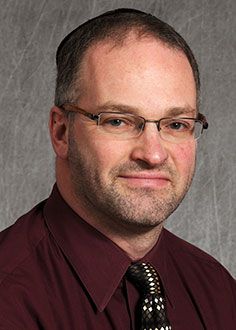
WASHINGTON (Nov. 14, 2012) – In the United States, one in 10 men and one in 14 women have had a kidney stone. Unless the kidney stone is too large to pass on its own, the treatment prescribed is usually plenty of fluids and painkillers while letting it pass over a period of several days. Jeremy Brown, M.D., associate professor of emergency medicine at the George Washington University (GW) School of Medicine and Health Sciences, has received a grant that will ideally give this increasingly large group of patients more options with fewer complications.
Brown received a four-year, $4,198,046 cooperative agreement research project grant from the National Institutes of Health (NIH) and the National Institute of Diabetes and Digestive and Kidney Diseases to explore new ways to treat kidney stones. His research project, titled “Multi-Center Study of Tamsulosin for Ureteral Stones in the Emergency Department,” will enroll patients with kidney stones in three Emergency Departments (EDs), including the ED at GW, and randomize them to either an active medication called Tamsulosin or a placebo.
“I originally became interested in this because I saw Tamsulosin being used by some urologists,” said Brown. “I realized it hadn’t actually been studied in a rigorous way.”
Brown began studying the effects of Tamsulosin as a treatment option for kidney stones with a small-scale study at GW funded by the NIH. After the successful completion of this study, Brown submitted a proposal for a larger study that would include additional EDs. The three EDs included in the study are those of GW, the University of Pennsylvania, and the University of Pittsburgh. Patients who present with kidney stones will receive the usual treatment – pain medications, CT scans, and fluids – and will then be asked if they would like to be enrolled in the study. If enrolled in the double blind study, they will be randomly assigned to receive either Tamsulosin or a placebo. Brown and his research team will then call to check up on the patient during the first month and after three months to determine whether they had any complications and how quickly the stone passed.
Brown believes treatment with Tamsulosin may help patients pass their kidney stones faster and with fewer complications.
“In terms of the patient, the best case scenario would be that this medication helps get kidney stones out sooner, so they are out of pain quicker and with fewer complications,” said Brown. “That way, they can get off pain medications, which are usually quite strong, and get back to normal living.”


